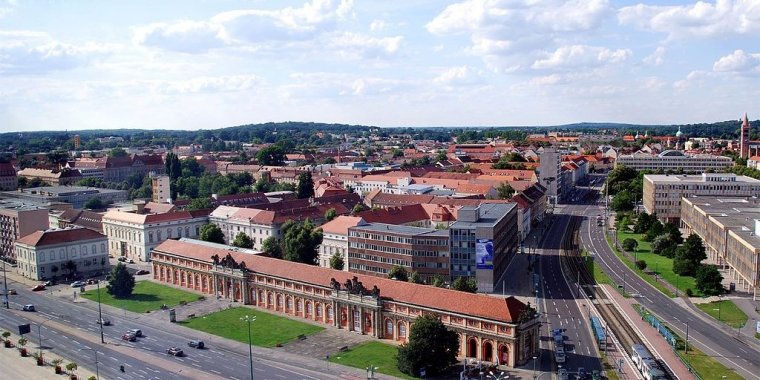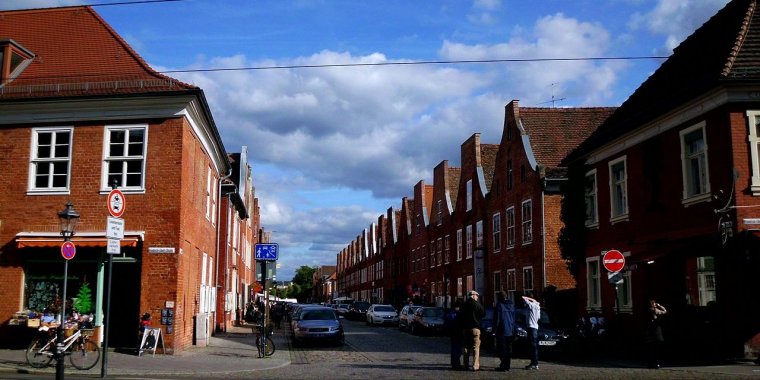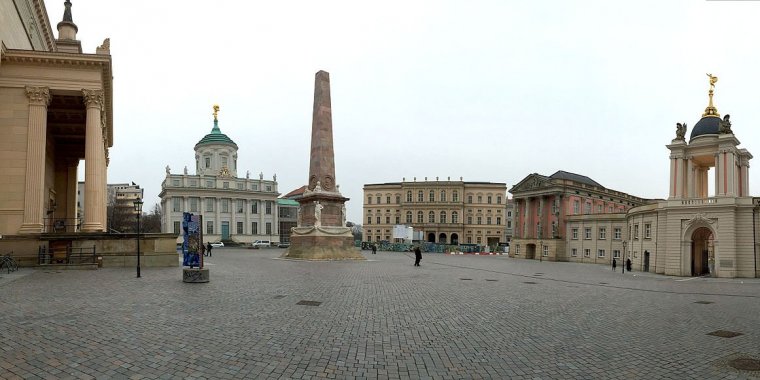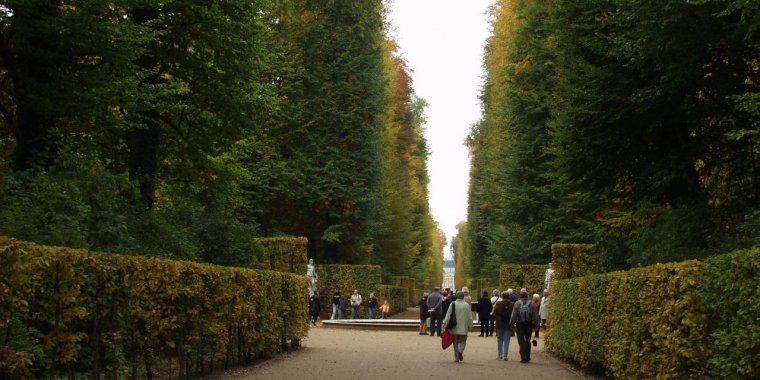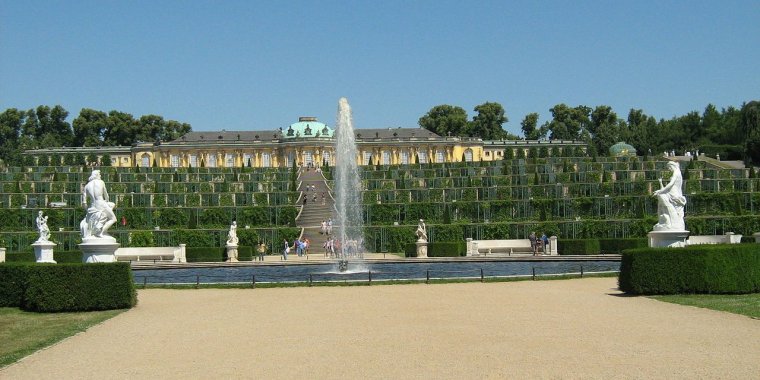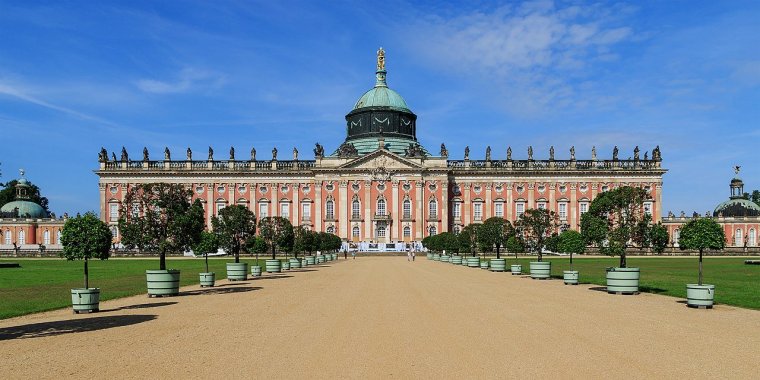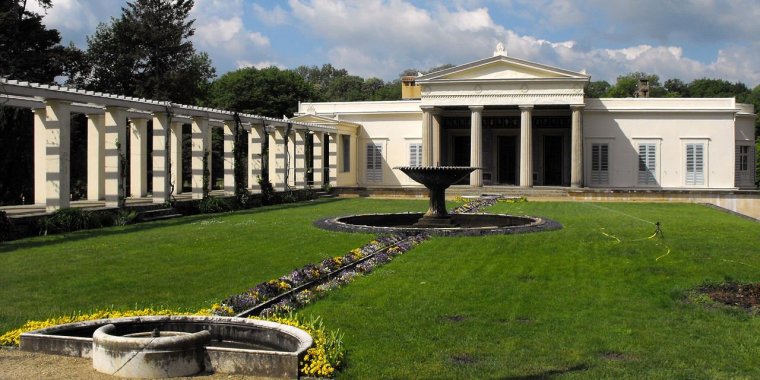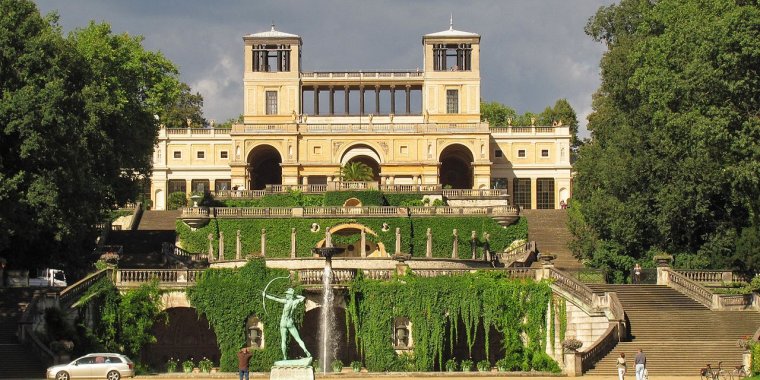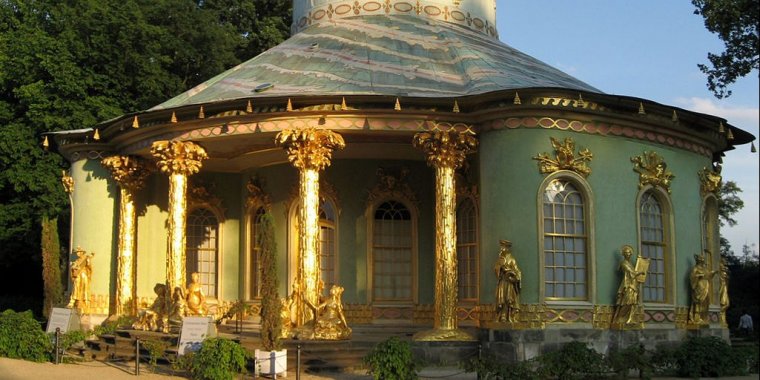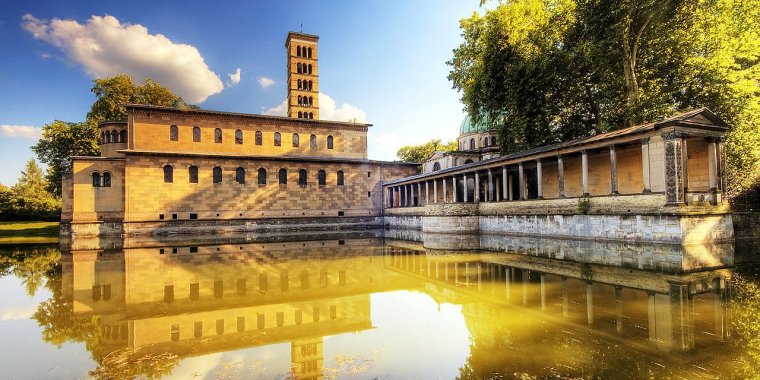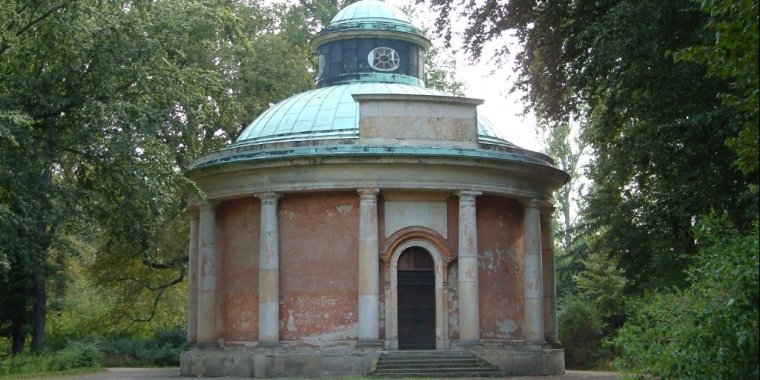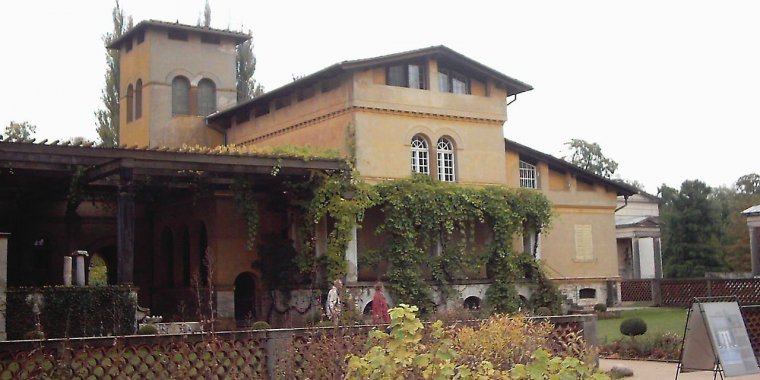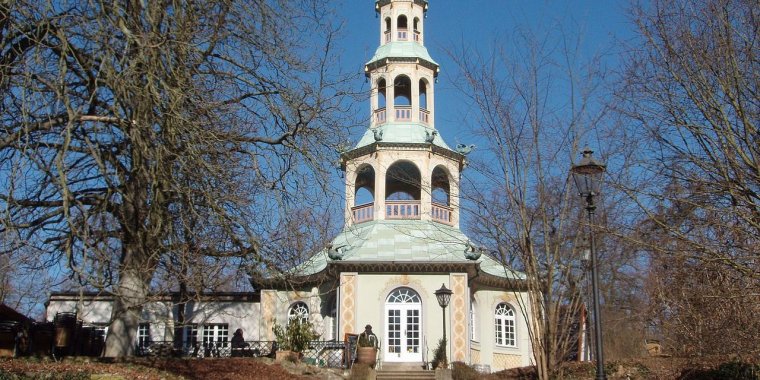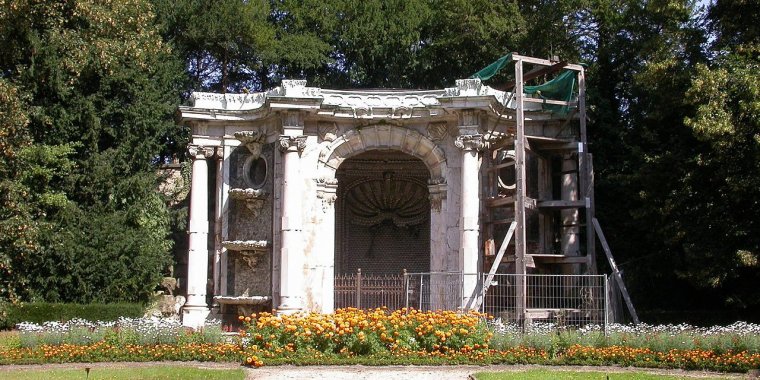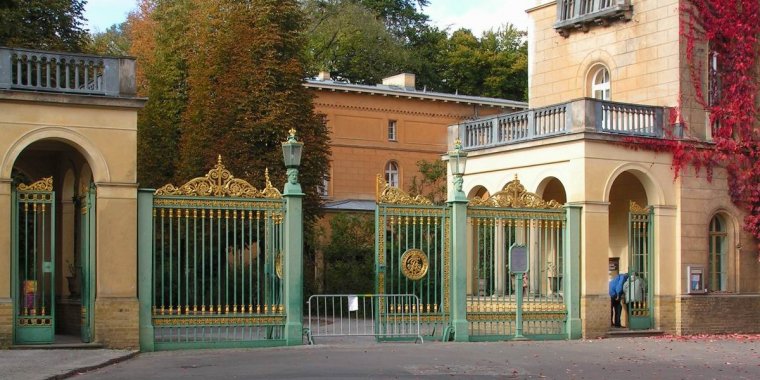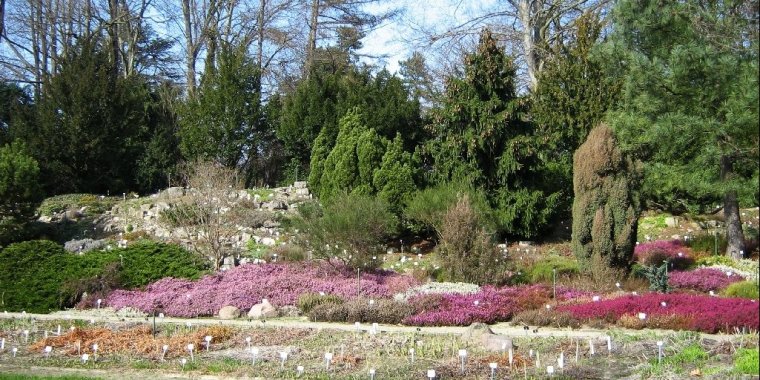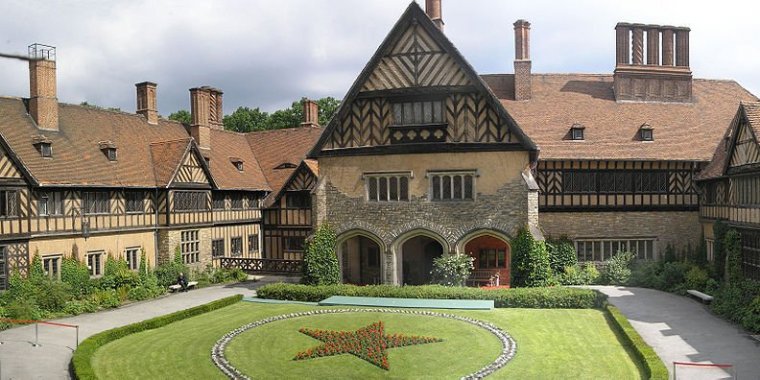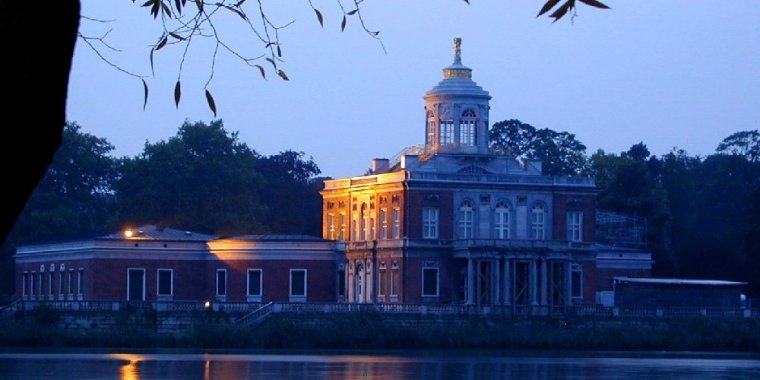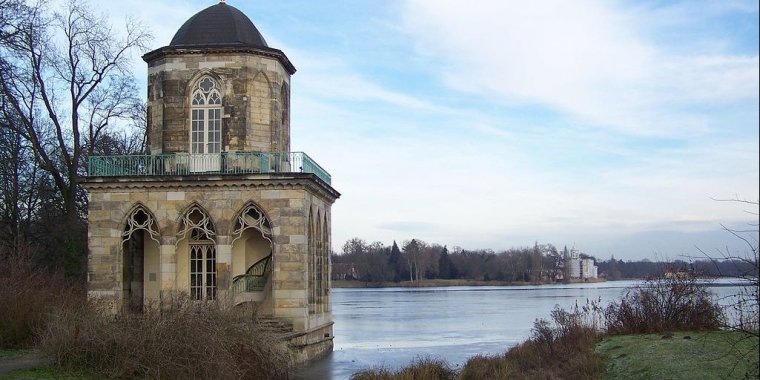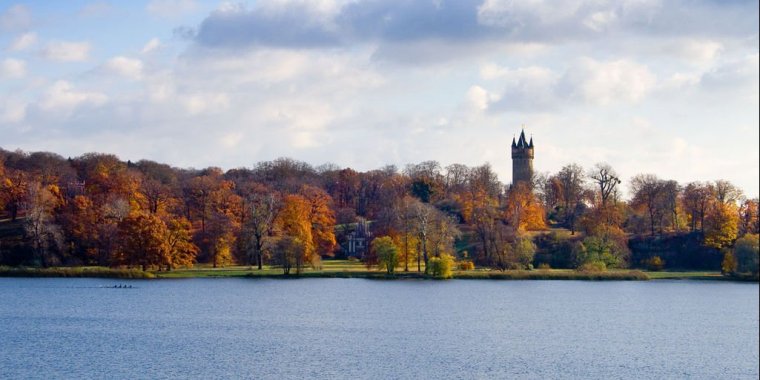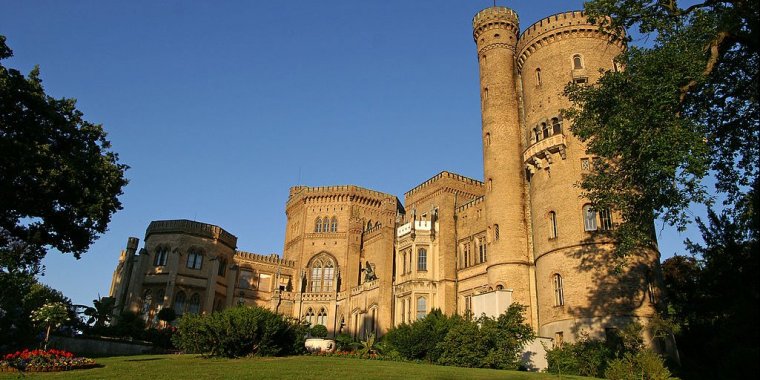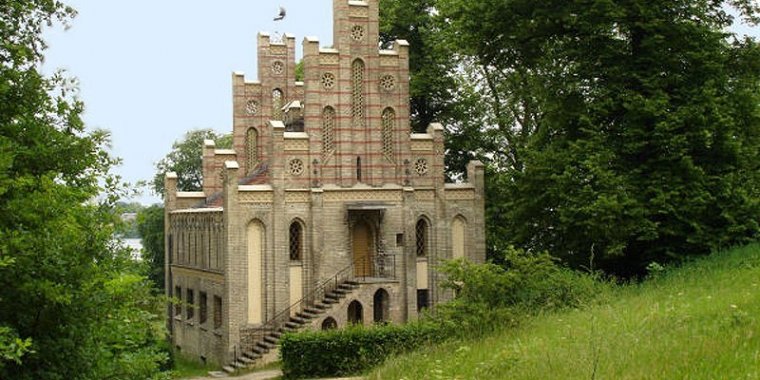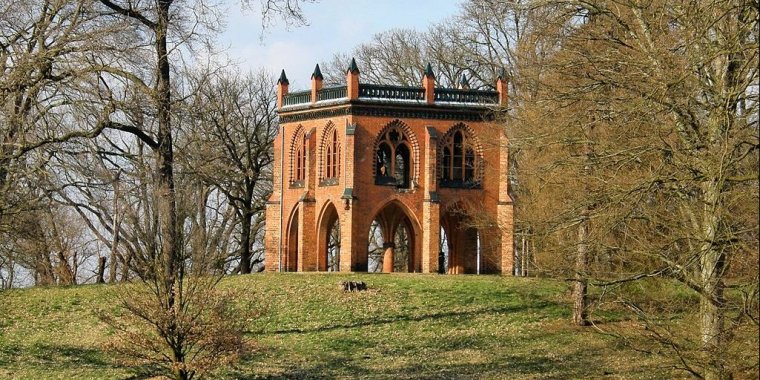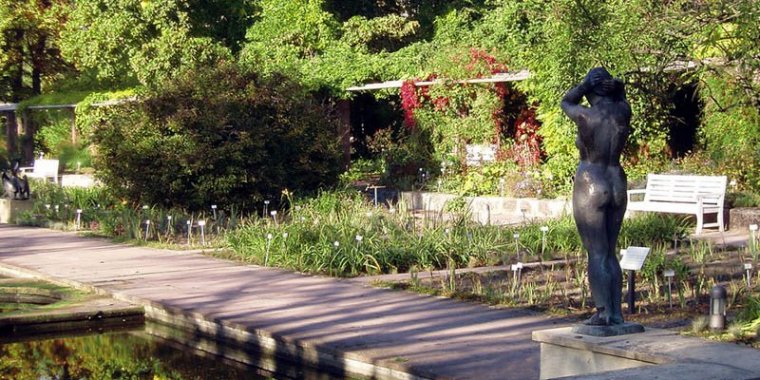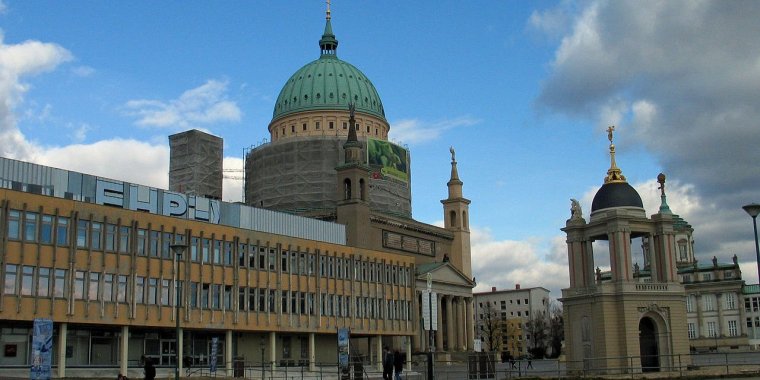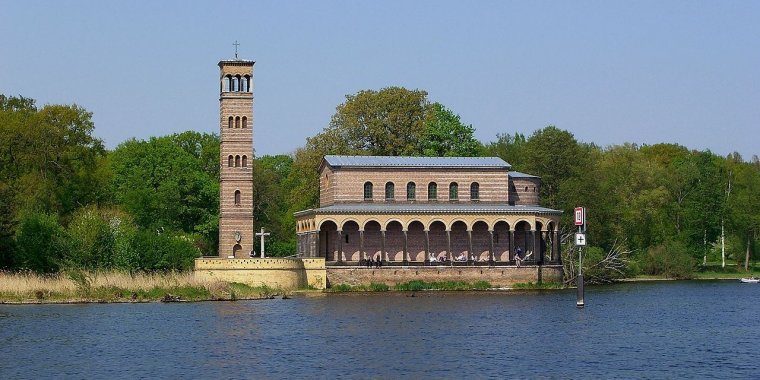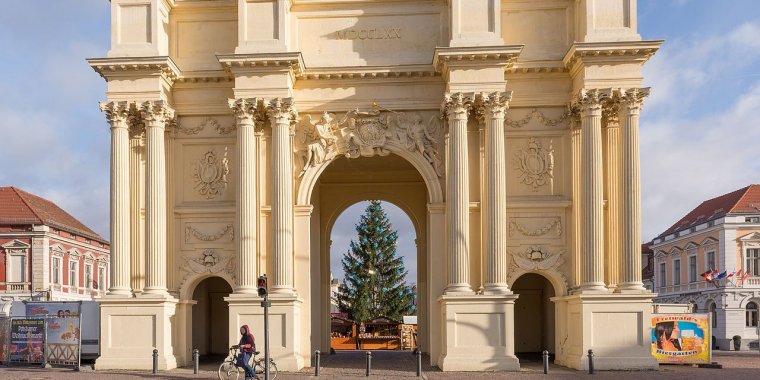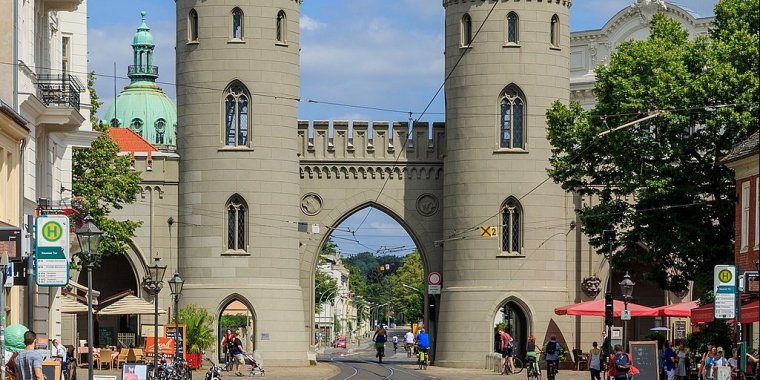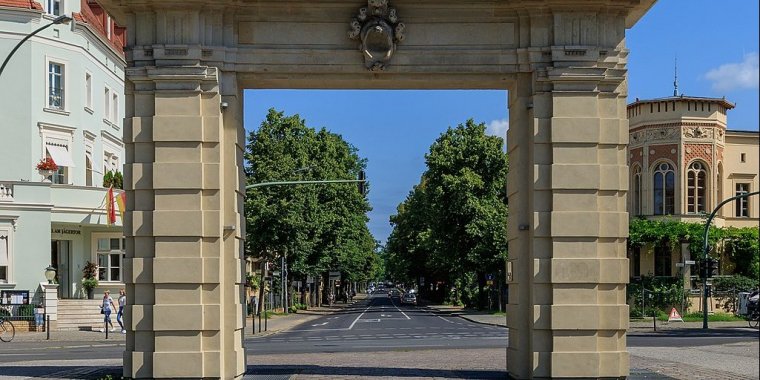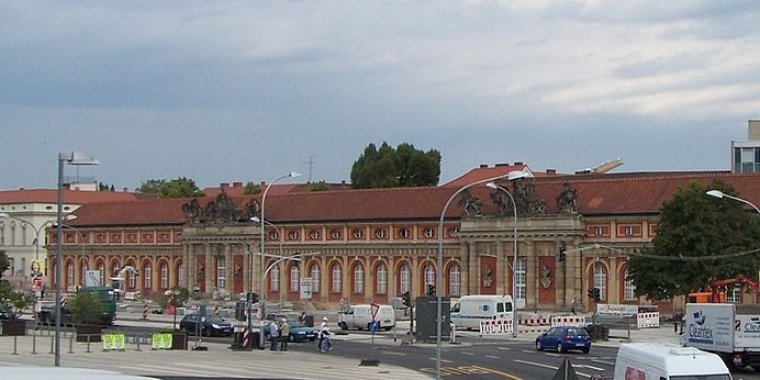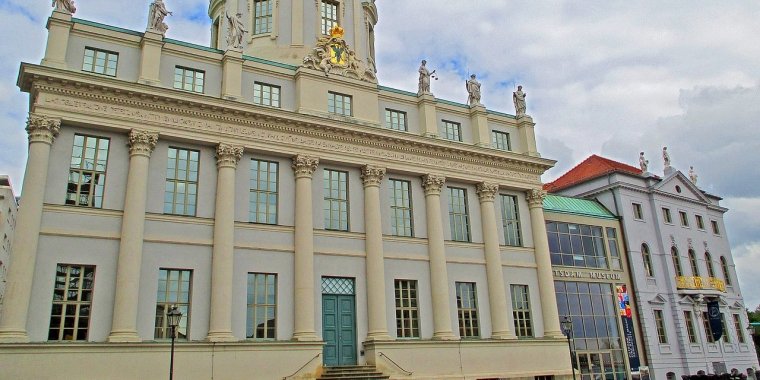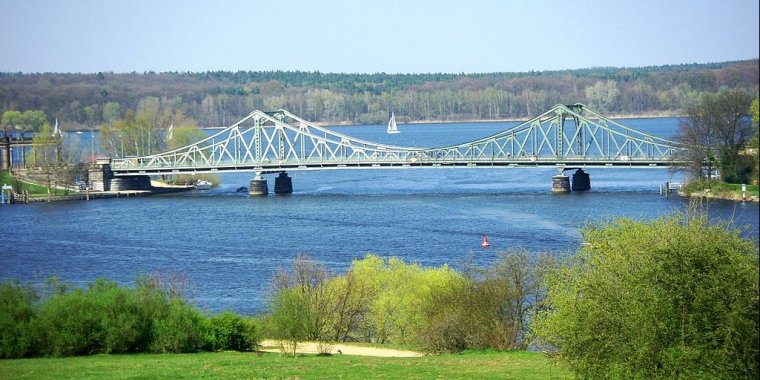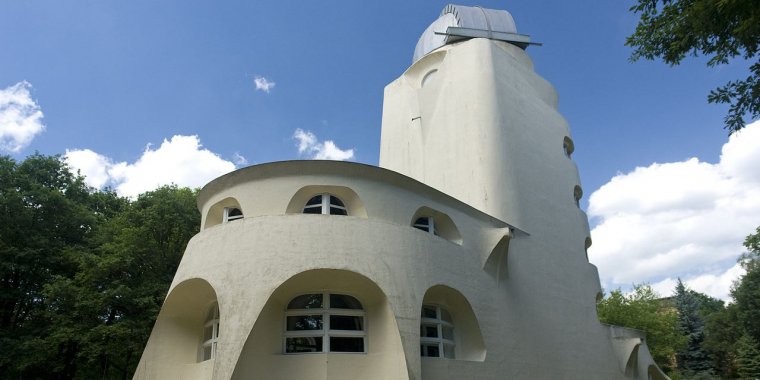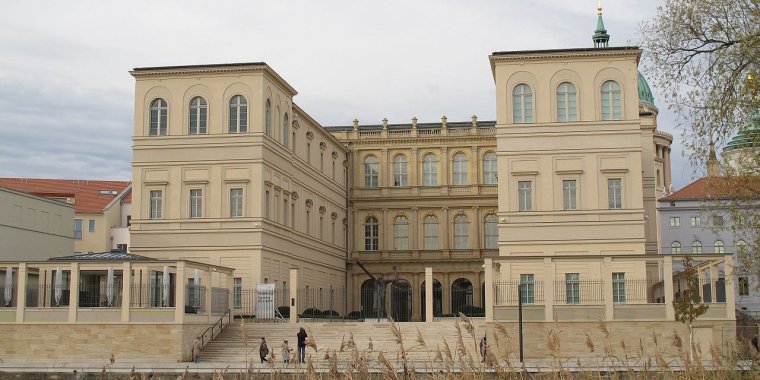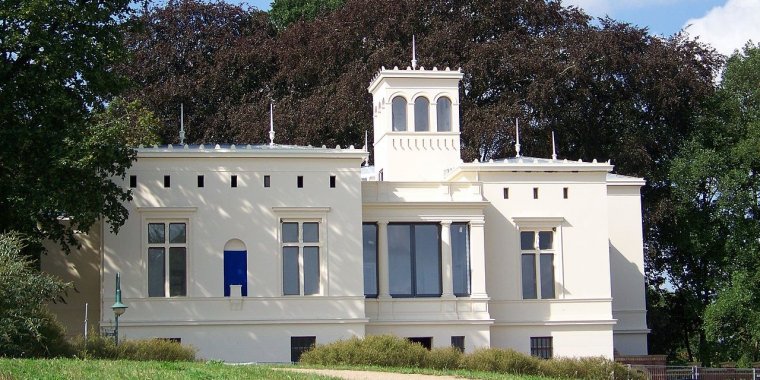| Published in Attractions / Places of Interest |
Tourist Attractions in Potsdam, Germany
Potsdam was a residence of the Prussian kings and the German Kaiser until 1918. Around the city there are a series of interconnected lakes and cultural landmarks, in particular the parks and palaces of Sanssouci, the largest World Heritage Site in Germany.
Most palaces are managed by the Prussian Palaces and Gardens Foundation Berlin-Brandenburg, SPSG. They offer a combined ticket (sanssouci+ Ticket) giving you access to most of their palaces in Potsdam on one day. The price for adults is €19 and for concessions €14.
• Holländisches Viertel. Right in the middle of Potsdam are the "Dutch Quarters", built in the 18th century by Dutch master builder Johann Boumann to attract other Dutch artisans. The quarters consist of 134 red brick houses, divided into four blocks. The history of the Dutch Quarters can be seen in the Jan Bouman house in Mittelstraße 8.
• Alter Markt. The old market is the historic city center, the Stadtschloss (city castle) is under re-construction. You can visit the Nikolaikirche there.
• New Market. The new market is an original preserved market square from the 18th century.
• Krongut Bornstedt, Ribbeckstraße 6/7. An architectural complex in Italian style with a palace and a garden.
Sanssouci
• Park Sanssouci. Daily 08:00-dusk. This immense park outside Berlin in the city of Potsdam is on the UNESCO World Heritage list, along with all its outbuildings, such as Sanssouci Palace and New Palace. Walk around this park with its many castles, follies, cascading terraces, mini-gardens, and romantic ruins.
• Sanssouci Palace (Schloss Sanssouci), Maulbeerallee. Mon closed. A fabulous rococo palace with amazing interiors. The baroque decoration is wonderful. Get there early: there is a 2000 person/day entry limit at Schloss Sanssouci. Adults €12, concessions €8.
• Gemäldegaleria. The beautiful collection of paintings at the Sanssouci Palace.
• New Palace (Neues Palais), Am Neuen Palais. Tue closed. The Neues Palais is also worth a visit, one of the most noteworthy rooms in the palace is the Konzertsaal (concert hall) - dripping in rococo glory. Adults €8, concessions €6 (including guided tour or audio guide).
• Charlottenhof Palace (Schloss Charlottenhof) (1826 to 1829)
• Orangery Palace (Orangerieschloss), also called the Orangery (Orangerie) or New Orangery (Neue Orangerie) (1851 to 1864)
• New Chambers (Neue Kammern) (1771 to 1775)
• Chinese House (Chinesisches Haus) (1755 to 1764)
• Church of Peace (Friedenskirche) (1845 to 1848). This church was established at the entrance to Sanssouci Park like a medieval Italian monastery.
• Antique Temple (Antikentempel) (1768/1769)
• Temple of Friendship (Freundschaftstempel) (1768 to 1770)
• Roman Baths (Römische Bäder) (1829 to 1840)
• Belvedere on the Klausberg (Belvedere auf dem Klausberg) (1770 to 1772)
• Dragon House (Drachenhaus) on the Klausberg (1770 to 1772)
• Historic Mill of Sanssouci (1736 to 1739, first rebuilding begun 1790, destroyed during fighting in 1945, rebuilt in 1983 and from 1990 to 1993)
• Neptune Grotto (Neptungrotte) (from 1751)
• Green Gate (Grünes Gitter) at the park entrance
• Botanical Garden, Potsdam
Nauener Vorstadt
• The New Garden (Neuer Garten). Daily 08:00-dusk. Stroll around New Garden (part of the UNESCO world heritage ensemble), on the banks of the river Havel. Spanning an area of 102 hectare, this park was created in 1787 by Friedrich Wilhelm II in contrast to the Baroque Park Sanssouci. It borders with two lakes, and hosts the Marble Palace and the Palace Cecilienhof. It was here that Churchill, Stalin and Truman met for the Potsdam Conference, at the end of World War II. Free (suggested donation €2).
• Cecilienhof Palace (Schloss Cecilienhof), Im Neuen Garten 11 (in the New Garden). Mon closed.
• Marble Palace (Marmorpalais), Im Neuen Garten 10. Mon closed. In winter only open on weekends. Adults €6, concessions €5.
• Former KGB Prison Potsdam (Gedenk- und Begegnungsstätte Ehemaliges KGB-Gefängnis Potsdam), Leistikowstr. 1. Tue-Sun 14:00-18:00, Mon closed. Memorial and meeting place at the former KGB prison. From August 1945 it was occupied by soviet forces. It has been reconstructed as a prison for the counterintelligence. Today it's been left standing to remind people of the depressing reality of dictatorships. Free entry.
• Russian Colony, Alexandrowka 2. Alexandrowka consists of a few "Russian Style" houses built for Russian immigrants during the reign of "The Soldier King". House No. 2 (Haus 2) has a very interesting museum while House No. 4 (Haus 4) has an excellent café.
• Orangery (1791 to 1793)
• Gothic Library (1792 to 1794)
• Pyramids (1791 to 1792)
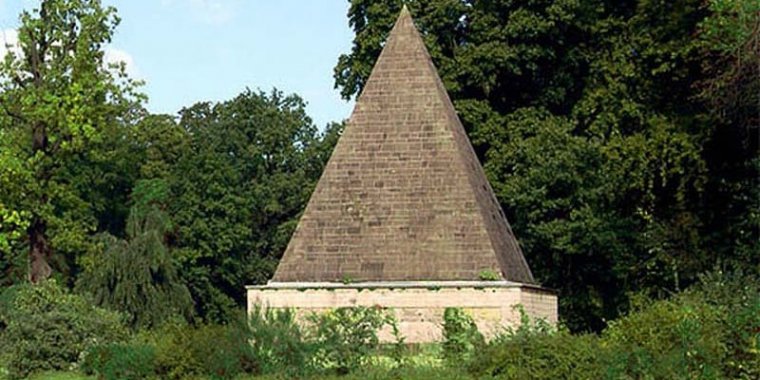
Ice house shaped as a pyramid. ![]()
• Dairy (1790 to 1792). In the course of laying out the landscape garden and building the Marble Palace under Frederick William II of Prussia, a dairy was built to supply the royal court. Cows grazing on the surrounding land produced milk for the manufacture of butter and cheese.
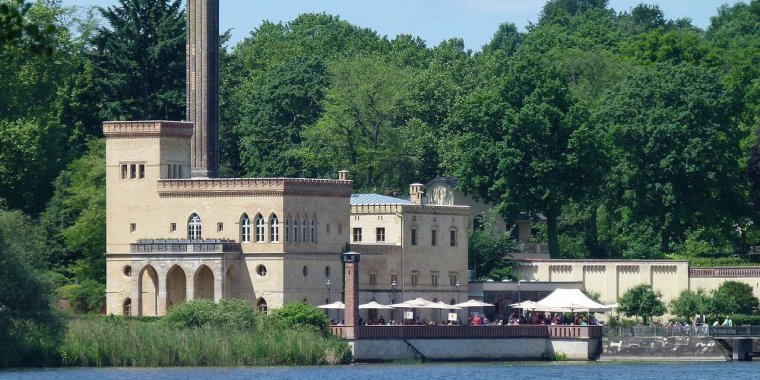
The Old Dairy-Farm on River Havel. ![]()
• Crystal and Shell Grotto (Crystall- and Muschelgrotte) (1791/92)
• Dutch Quarter (Holländisches Etablissement) - houses in Dutch style
• Garden houses: the White, Brown, Red and Green House
Babelsberg Park
• Babelsberg Park (started 1833) A beautiful park with a gothic-style castle. It is also part of the World Heritage site. One part of the university is placed here.
• Royal Stables (Marstall) (1834 to 1839 and 1861)
• Babelsberg Palace (1835 to 1849)
• Little Palace (Kleines Palace) (1841/42)
• Sailors' House (Matrosenhaus) (1842)
• Steam-powered Pumping Station (Dampfmaschinenhaus) (1843 to 1845)
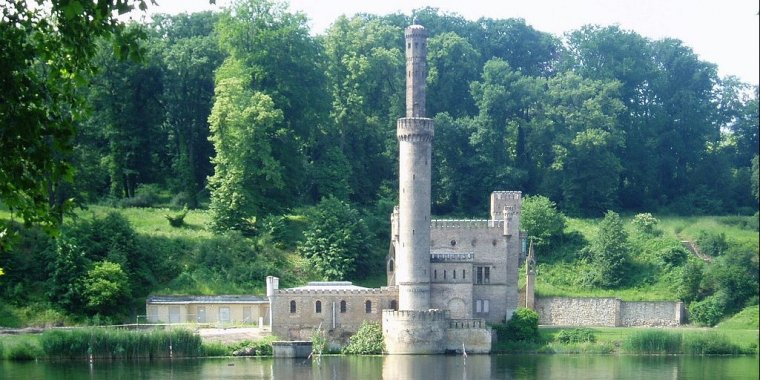
Steam-powered Pumping Station. ![]()
• Flatow Tower (Flatowturm) (1853 to 1856)
• Court Arcade (Gerichtslaube) (1871)
Other parks and gardens
• Island of Friendship (Freundschaftsinsel) in the centre of the city with the Karl Foerster perennial garden.
• Karl Foerster Garden in Potsdam-Bornim with its private residence.
• Pleasure Garden (Lustgarten), the oldest garden in Potsdam, originally part of the City Palace (Stadtschloss) site.
• Potsdam Municipal Park (Volkspark Potsdam) on the old 2001 Federal Garden Show site with the Potsdam Biosphere, a commercially run park.
• Potsdam Wildlife Park (Wildpark, 1834 to 1838), one of the oldest examples of the linkage of courtly tradition and landscape gardening. The wildlife park has an area of over 875 hectares and is located west of Sanssouci Park.
• Bornstedt Cemetery, more-than-400-year-old park with Italian-like church. Amongst those buried here are Ferdinand von Arnim, Peter Joseph Lenné and Ludwig Persius.
Churches
• St. Nicholas' Church, (1830 to 1837). A giant domed building based on cathedrals in Rome, London and Paris, on the Old Market Square.
• French Church, (1752/1753). Based on the Roman Pantheon and built for French settlers, consecrated in 1753, builders: restored by Knobelsdorff, Boumann, in the past years.
• Roman Catholic Priory Church of St. Peter and Paul, (1867 to 1870). Like a campanile writ large, the church stands at the end of the Potsdam Bummelboulevard.
• Church of the Redeemer, well outside the town centre, on the banks of the Havel, in the style of an Italian basilica, stood for years in the shadow of the wall in no-man's land.
• Alexander Nevsky Memorial Church built for the Russian residents of the settlement of Alexandrowka below the Kapellenberg, used without interruption, consecrated 1829, oldest Russian Orthodox church in Germany.
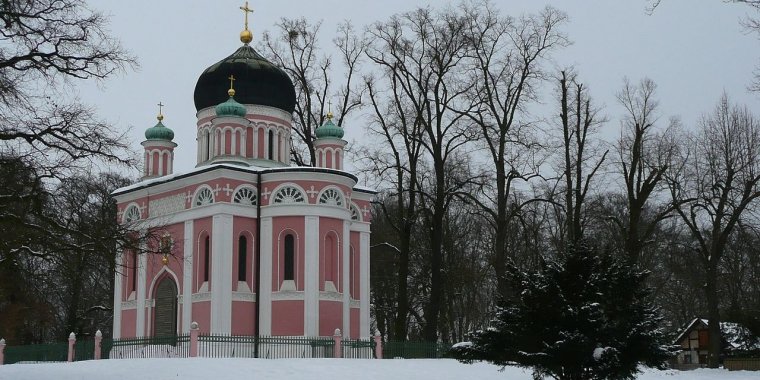
Alexander Nevsky Memorial Church. ![]()
• Church of Our Saviour (Erlöserkirche). Evangelical church in Potsdam-West, consecrated in 1898.
• Church of Christ, wedged between residential buildings continues to be the one-time Old Lutheran church, consecrated in 1903. Today the church is used independent Evangelical-Lutheran Church of Christ parish (SELK).
• Pentecostal Church, (1894). This church stands in an idyllic garden setting, consecrated in 1894, architect: Tiedemann.
• Hermannswerder Island Church, a Neogothic building that belongs to the Hoffbauer Foundation, consecrated in 1911.
• Frederick Church on the Weberplatz, (1752/1753). Centrepiece of a settlement for Bohemian weavers in Babelsberg (formerly Nowawes), consecrated in 1753.
• Oberlin Church, Babelsberg, (1904/1905). focal point of the Oberlinhaus, inter alia a lyceum for deaf-blind people, consecrated in 1905.
• Old Neuendorf Church in Babelsberg, built 1850-52, rebuilding started in 1998.
• Parish Church of St. Anthony, Roman Catholic church for Babelsberg, consecrated in 1934, architect: Fahlbusch.
• Chapel of Klein-Glienicke, near the city's boundary with Berlin, which meant that the church fell into ruin as a result of its proximity to the Berlin Wall, consecrated in 1881, architect: Reinhold Persius.
• Bornstedt Church, Italianate church that watches over the graves of famous Potsdam townsfolk, consecrated in 1856, builder: Stüler.
City gates
• Brandenburg Gate (1770)
• Nauen Gate: construction plans by Johann Gottfried Büring based on 1754 sketches by King Frederick II of Prussia. First example of Neogothic in continental Europe.
• Jägertor ("Hunters' Gate", 1733)
Museums
• Haus der Brandenburgisch-Preußischen Geschichte, Am Neuen Markt 9. A museum about Prussia's history.
• Museum of Natural History (Naturkundemuseum Potsdam), Breite Straße 13.
• Film Museum, Breite Straße 1A. Exhibitions about cinema history in Potsdam and movie theatre.
• Potsdam Museum, Am Alten Markt 9 (at the Dutch District). Mon closed.
• Altes Rathaus. Changing exhibitions at the old town hall.
• Glienicke Bridge (Glienicker Brücke). It is a bridge between Berlin and Potsdam which spans the Havel River to connect the cities of Potsdam and Berlin near Klein Glienicke. It was completed in 1907. The bridge was used to exchange spies.
• Einstein Tower. An astrophysical observatory in the Albert Einstein Science Park.
• Museum Barberini - Built on the site of Barberini Palace.
• Villa Schöningen, a historic residence in the Potsdam district of suburban Berlin, at Berliner Strasse 86, located at the corner of Berlin Street and Swan Avenue, just west of the Glienicke Bridge.
Nearby
• Schloss und Schlosspark Glienicke (Glienicke Palace, Casino and Garden) in Berlin/Steglitz-Zehlendorf.
• The Pfaueninsel (Peacock Island) in Berlin/Steglitz-Zehlendorf is a small island with free living peacocks. (Wikivoyage, Wikipedia)
YOU MAY ALSO LIKE




 If you own or manage a travel-related business such as a hotel, a bed-and-breakfast, a restaurant, a pub or a cafeteria, you can create a web page for your business for free on Titi Tudorancea Travel Info. » |
